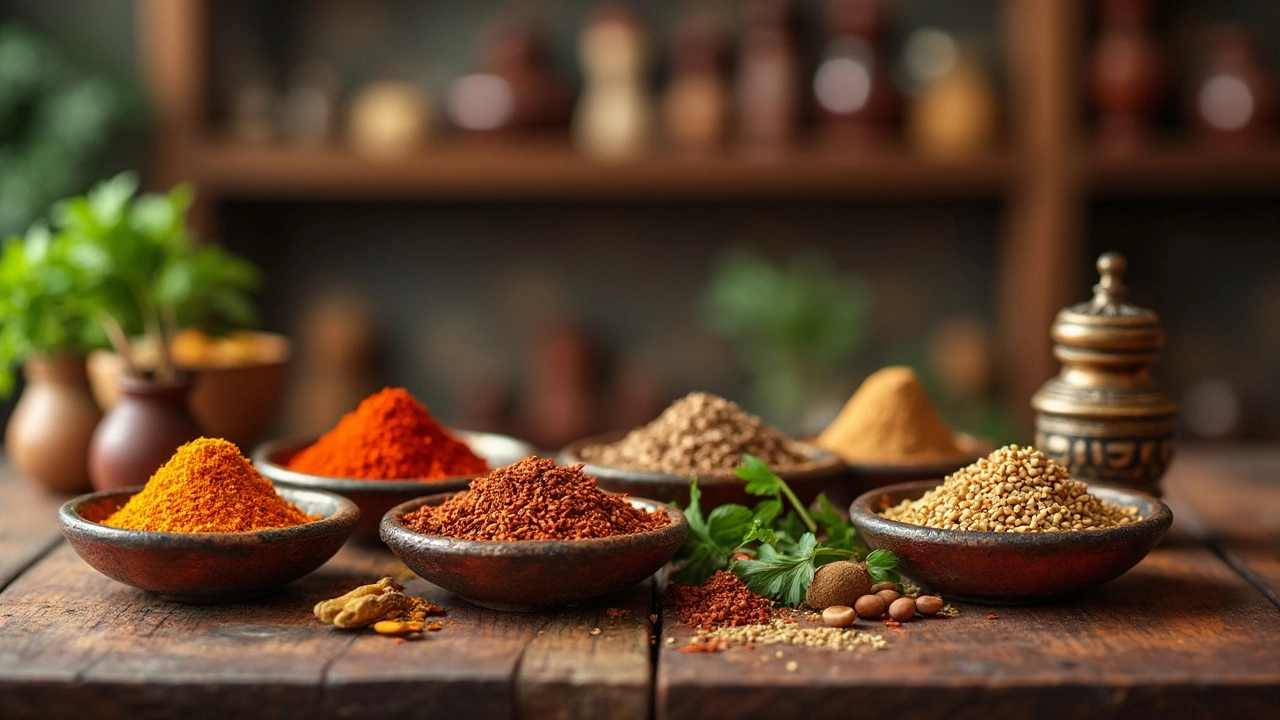curry powder: the essential spice blend for Indian cooking
When you reach for curry powder, a dry spice blend that brings warmth and depth to dishes. Also known as masala powder, it is a cornerstone of Indian cuisine and usually mixes turmeric, coriander and cumin. This blend curry powder combines aromatic herbs and hot peppers, so it can lift a plain lentil soup into a fragrant meal.
Why the blend matters and how it connects to other Indian staples
The power of curry powder lies in its balance. Turmeric adds a golden hue and anti‑inflammatory benefits, coriander contributes citrusy sweetness, while cumin brings earthiness. Together they create a flavor profile that complements vegetables, legumes and meats alike. Because the blend already contains salt‑like seasoning, you often adjust the amount of extra salt in a recipe. This relationship means you can swap a fresh masala paste for curry powder without losing depth – a handy shortcut for busy weeknights.
Another key link is storage. A well‑sealed jar kept in a cool, dark pantry preserves volatile oils for up to two years. When the aroma fades, the blend loses its punch and you’ll notice flat curries. So proper storage requires airtight containers and minimal exposure to heat, a tip that shows up in many of our articles about spice longevity. If you buy a bulk pack, split it into smaller jars; this small habit keeps the flavor fresh and saves you from over‑spicing later.
People also wonder whether they can make curry powder at home. The answer is yes, and it lets you control the heat level. Roast whole coriander seeds, cumin seeds, and peppercorns, then grind them with turmeric, fenugreek, and a pinch of mustard seed. The result is a customizable blend that fits regional tastes – South Indian versions lean heavier on mustard and curry leaves, while North Indian mixes favor extra chili powder. This DIY approach connects to our "Curry Ingredients" guide, which breaks down each spice’s role and shows how swapping one for another changes the final taste.
Finally, curry powder isn’t just for classic curries. Sprinkle a teaspoon into roasted vegetables, stir it into a tomato‑based soup, or mix it with yogurt for a quick dip. The blend enhances umami, brightens bland dishes, and adds a warm finish without the need for fresh herbs every time. Whether you’re following our "Creamy Curry" article or looking for a quick flavor boost, the versatility of curry powder makes it a pantry hero for cooks of any skill level.
Below you’ll find a curated list of posts that dive deeper into the spices, techniques, and health angles surrounding this essential blend. From mastering the perfect biryani balance to understanding why lemon brightens a curry, these resources will give you practical, kitchen‑ready knowledge to make the most of your curry powder stash.

What's the Closest Spice to Curry Powder?
Curry powder is essential to many Indian dishes, but what if you're out of it? Discover the best spice alternatives to curry powder, focusing on ingredients that match its flavor profile closely. Learn how to adapt your chicken curry recipe without losing that beloved taste. Dive into the world of spices and find out how cumin, coriander, or garam masala can step into the spotlight when curry powder is missing.